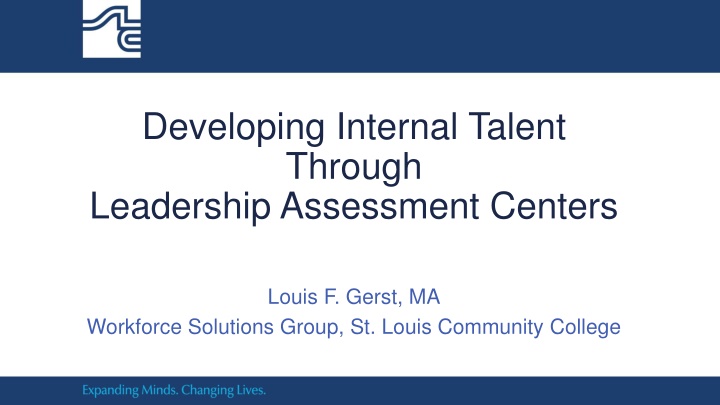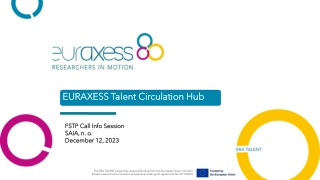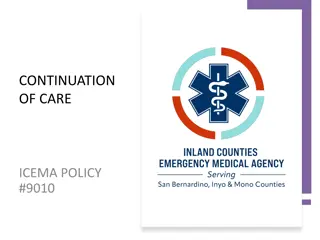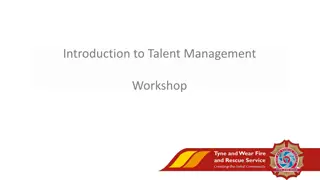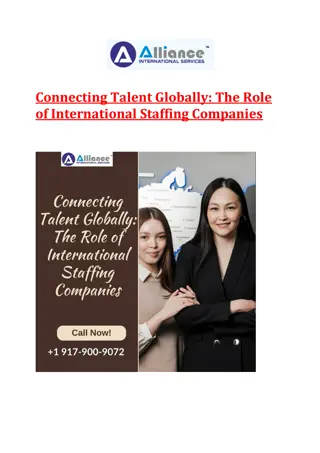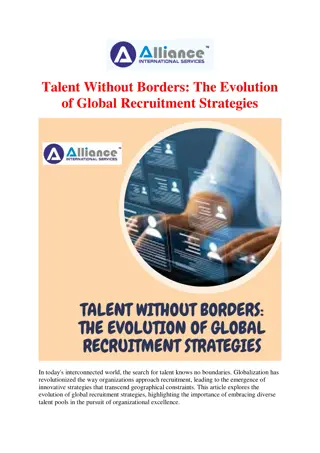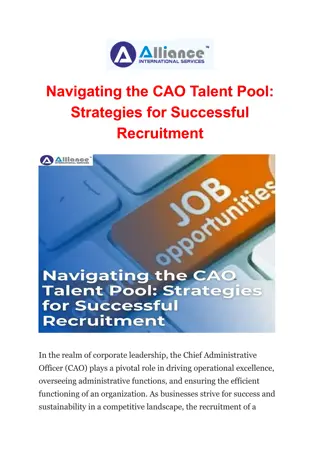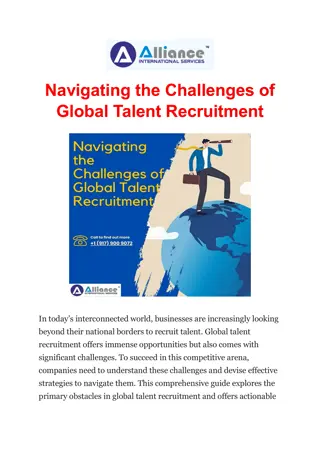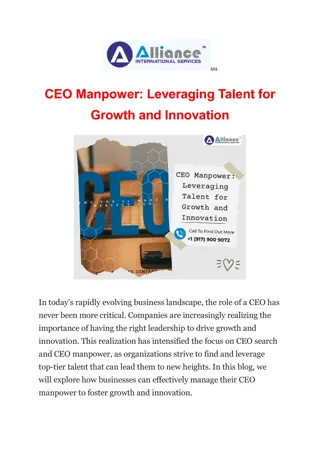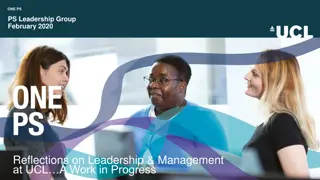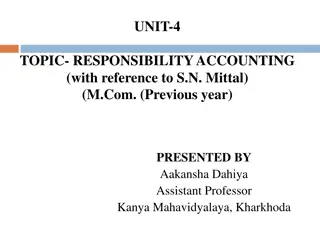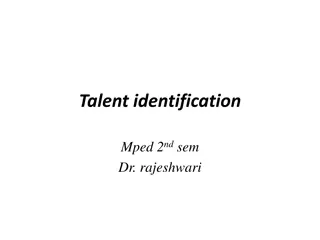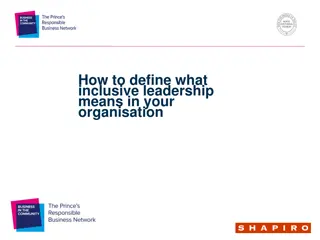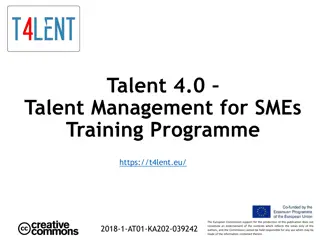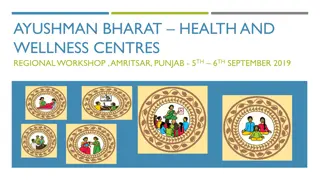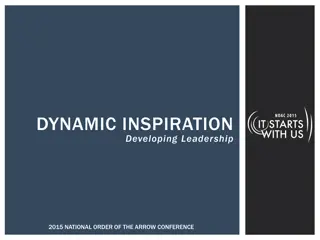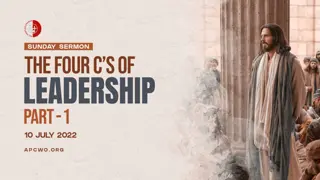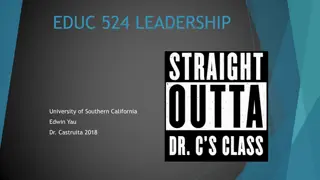Developing Internal Talent Through Leadership Assessment Centers
Concept of assessment centers for developing internal talent through a variety of exercises designed to assess readiness for leadership roles. This involves defining assessment centers, selecting candidates, running the center, coaching, and more. Discover the purpose, benefits, and challenges associated with assessment centers in nurturing leadership pipelines within organizations.
Download Presentation

Please find below an Image/Link to download the presentation.
The content on the website is provided AS IS for your information and personal use only. It may not be sold, licensed, or shared on other websites without obtaining consent from the author.If you encounter any issues during the download, it is possible that the publisher has removed the file from their server.
You are allowed to download the files provided on this website for personal or commercial use, subject to the condition that they are used lawfully. All files are the property of their respective owners.
The content on the website is provided AS IS for your information and personal use only. It may not be sold, licensed, or shared on other websites without obtaining consent from the author.
E N D
Presentation Transcript
Developing Internal Talent Through Leadership Assessment Centers Louis F. Gerst, MA Workforce Solutions Group, St. Louis Community College
Agenda Defining Assessment Centers Creating an Assessment Center Selecting the Right Candidates Execution: Running an Assessment Center After the Center Coaching Summary
Assessment Centers What do They Look Like? It is a collection of exercises of different types designed to assess readiness for a specific position or level of leadership Often portrayed as a day in the life of a person in the target position A collection of activities that reflect the role As much variety as exists in the role A role that justifies the investment of an assessment center will include a variety of duties Very often people are pushed to their limit it is in the design It runs continuously there are few breaks, and the exercises are often interdependent
Assessment Centers What is the Purpose? To generate data regarding specific development needs for individuals To create a leadership pipeline for organizations to help create a leadership bench To establish an organization focus on growth and development of internal employees To demonstrate a visible investment in leadership and to take better advantage of the people resources of the organization
Assessment Centers What are the Benefits/Challenges? Benefits Works as a Realistic Job Preview for potential leaders Allows a glimpse into how individuals react to real world business situations Provides a more precise assessment of leadership talent Results in specific, behavioral feedback to help groom leadership skills Entirely customizable to the leadership needs of the organization Challenges It takes an investment of time and resources to build It takes an investment of time and resources to run It takes an investment of time and resources to maximize the outcomes People who are not invited to attend can feel left out (may be good & bad)
Assessment Centers: Who uses them? Edward Jones Investments Johnson & Johnson Anheuser Busch Raytheon Technologies Monsanto
Creating an Assessment Center: Job Analysis It starts with understanding the target role Job behaviors Potential pitfalls Skills that increase the likelihood of success Tendencies, reactions and characteristics that might get in the way of success A good job analysis is the foundation of the process
Creating an Assessment Center The Role of Leadership Competencies A common language in an organization that describes what it takes to be successful as a leader Broad categories specific & different depending on the role/org/industry Communication Problem solving Collaboration Creativity Strategic thinking Developing others Building relationships If you do not have these, there are ways to get them This is what we want to measure and develop!
Creating an Assessment Center Developing Exercises The goal is to develop exercises that are realistic, representative, and that create opportunities to measure the important competencies Competencies are measured in different types of exercises General components: In-basket how competencies manifest in dealing with emails/messages Role play how do competencies show up dealing one-on-one Presentation competencies in preparing, creating and executing a message Group work the impact of others on demonstration of competencies Any other behavior that is associated with the role Everything must be packaged into a believable and logistically simple day in the life
Selecting Candidates This is important Bringing in the right people will maximize positive impacts have a process Your high potentials Individuals that show promise with current performance Folks who seem to have an interest in their own development Investing in the future People that have a high ceiling if given attention and resources Retaining your best People that might leave to pursue leadership elsewhere (who you would miss) Avoid selection mistakes It is not a place for training people up It will always be a finite resource for the organization
Execution: Running an Assessment Center In-person Facilities Large group room Small breakout rooms Interview rooms Virtual Facilities Zoom or Microsoft Teams or whatever the organization is comfortable in Will need to be able to facilitate multiple breakouts Prepare for bumps Controlled Chaos Assessment centers move at a rapid pace and there are no time-outs Every exercise in connected to the previous and the next Create the Right Energy People should know that it is a big deal, but they should also know that it is a place to do what made them successful If they are their best selves, they will get feedback they can use You Need Good People It takes a logistics master to run a center smoothly It is best to have independent assessor/raters they have no vested interest in any participant
Scoring an Assessment Center Experience All Exercises Should have Scoring Standards Behaviorally anchored scales Tailored to the exercise Ratings are Rooted in Observable Behavior It will give credibility to the rating Raters Need Training Frame of reference training Avoid Typical Rating Errors Strictness Leniency Central Tendency Halo Horn Implicit Bias Offers Many Different Scores They Tell a More Complete Story Competencies within exercises Competencies across exercises Overall
After the Assessment Center Transparency It is a best practice to share the results of the center with participants as clearly and completely as possible It is the only way that they can maximize feedback Presenting Data There should be an extended conversation between the assessor/rater and the participant following the center The experience should be discussed from both persons point of view Share perceived strengths and areas of development in competency language, citing behavioral examples Determine the insights that are most important Creating a Plan for Development Given all the new data, what is most important? Utilize the organization s existing development process and partner to create a formal plan as a foundation for coaching
Coaching It Starts with the Debrief Both parties are getting a feel for what is important and how to best use coaching There is more data than what came from the assessment center consider it Intentional Change Development is about choosing one or two things to do differently You cannot have 5 top priorities Utilize action learning Make a plan execute talk about the results Continuous Assessment and Flexibility Do not overcommit to a plan for development pay attention to how it is going Sometimes things change and you should be ready to change focus The End is the Beginning When coaching ends, it is important to transition into a lifetime of development If you are not developing, you are slipping back
Summary Use Leadership Assessment Centers to Develop & Retain Future Leaders Create a culture of growth and development Leadership development takes time organizations need to be proactive and planful Your People are Potentially Your Greatest Resource Let them know how you feel about them Provide them the resources they need to reach their potential Invest in Them and Watch for the dividends
Thanks for Your Time Lou Gerst, MA Business Practice Leader for Strategic Talent Development Workforce Solutions Group, St. Louis Community College lgerst@stlcc.edu (314) 276-3028
